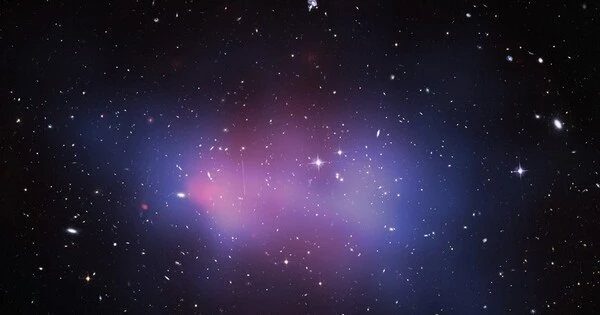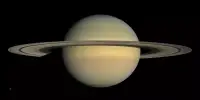The majority of the mass in the universe is in the form of dark matter, a new type of nonbaryonic particle that has yet to be detected in the laboratory or in other detection experiments. The evidence for the existence of dark matter through its gravitational impact is clear in astronomical observations, ranging from early observations of the large motions of galaxies in clusters and the motions of stars and gas in galaxies to observations of the universe’s large-scale structure, gravitational lensing, and the cosmic microwave background.
If general relativity is correct, the extensive data consistently show the dominance of dark matter and quantify its amount and distribution. Despite taking detailed measurements with state-of-the-art telescopes for forty hours, astronomers found no evidence of dark matter in the galaxy AGC 114905.
Despite taking detailed measurements with state-of-the-art telescopes over the course of forty hours, an international team of astronomers led by researchers from the Netherlands found no evidence of dark matter in the galaxy AGC 114905. They will publish their findings in the Royal Astronomical Society’s Monthly Notices.
This is, of course, what we thought and hoped for because it confirms our previous measurements. But now the problem remains that the theory predicts that there must be dark matter in AGC 114905, but our observations say there isn’t. In fact, the difference between theory and observation is only getting bigger.
Pavel Mancera Piña
When Pavel Mancera Piña (University of Groningen and ASTRON, the Netherlands) and his colleagues discovered six galaxies with little to no dark matter, they were told “measure again, you’ll see that there will be dark matter around your galaxy.” However, after fourty hours of detailed observations using the Very Large Array (VLA) in New Mexico (United States), the evidence for a dark matter-free galaxy only became stronger.
AGC 114905, the galaxy in question, is approximately 250 million light-years away. It is classified as an ultra-diffuse dwarf galaxy, with the term “dwarf galaxy” referring to its brightness rather than its size. The galaxy is roughly the size of our own Milky Way, but it contains thousands of times fewer stars. The widely held belief is that all galaxies, and especially ultra-diffuse dwarf galaxies, can exist only if they are held together by dark matter.

The researchers used the VLA telescope to collect data on the rotation of gas in AGC 114905 for 40 hours between July and October 2020. They then created a graph with the distance of the gas from the galaxy’s center on the x-axis and the rotation speed of the gas on the y-axis. This is a common method for detecting the presence of dark matter. The graph demonstrates that the motions of the gas in AGC 114905 can be fully explained by ordinary matter.
“This is, of course, what we thought and hoped for because it confirms our previous measurements,” says Pavel Mancera Piña. “But now the problem remains that the theory predicts that there must be dark matter in AGC 114905, but our observations say there isn’t. In fact, the difference between theory and observation is only getting bigger.”
The researchers list the possible explanations for the lack of dark matter one by one in their scientific publication. Large nearby galaxies, for example, could have stripped AGC 114905 of dark matter. Pia Mancera: “But there aren’t any. And in the most well-known framework for galaxy formation, the so-called cold dark matter model, we would have to introduce extreme parameter values that are far outside the normal range. We also cannot reproduce the motions of the gas within the galaxy using modified Newtonian dynamics, an alternative theory to cold dark matter.”
One more assumption, according to the researchers, could change their conclusions. That is the approximate angle from which they believe they are viewing the galaxy. “However, that angle has to deviate significantly from our estimate before there is room for dark matter again,” co-author Tom Oosterloo says (ASTRON).
Meanwhile, the researchers are delving into a second ultra-diffuse dwarf galaxy. If no evidence of dark matter is found in that galaxy again, the case for dark matter-poor galaxies becomes even stronger.















